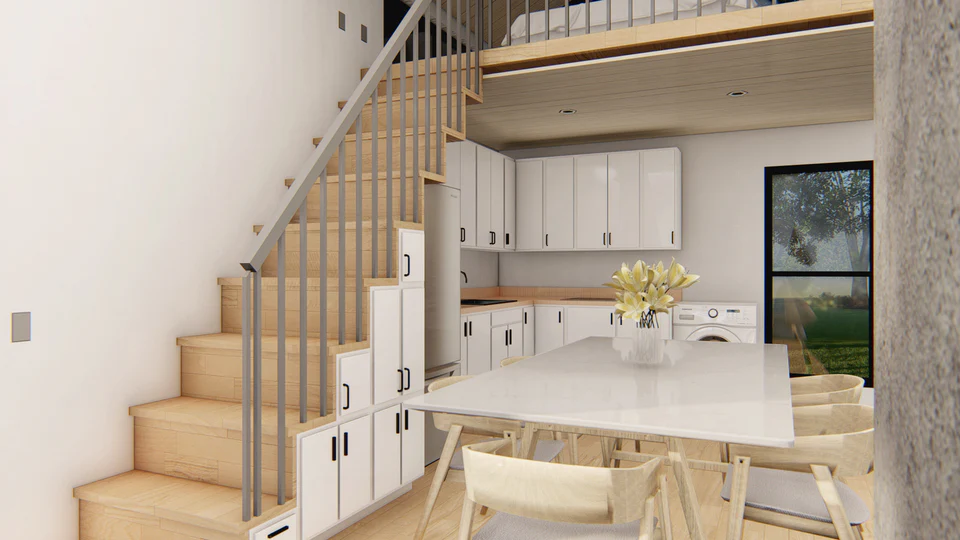Carpet Removal Made Easy: DIY Tips and Tricks

To easily remove your carpet, start by gathering essential tools like a utility knife and pry bar. Prepare the space by clearing furniture and securing loose wires. Remove baseboards carefully to guarantee they can be reinstalled later. Cut and pull the carpet in manageable strips while using pliers for stubborn sections. For the underlay, employ a utility knife to slice through attachments and a heat gun for hardened glue spots. Finally, check local guidelines for proper carpet disposal or recycling. By following these steps, you'll make the process straightforward and learn even more useful tips along the way.
- Gather essential tools like a utility knife, pliers, and a pry bar for efficient carpet removal.
- Prepare the space by removing furniture, vacuuming the carpet, and securing any loose wires.
- Cut and remove the carpet in 3-4 feet wide sections for easier handling and disposal.
- Carefully peel away the underlay, using tools like a heat gun for tough adhesive spots.
- Check local guidelines for carpet recycling and consider using removal services for large quantities.
Gather Your Tools
Before you start tearing up the carpet, make sure you've gathered all the necessary tools. This preparation will make the removal process smoother and more efficient. First, grab a utility knife with a sharp blade; it's essential for cutting the carpet into manageable strips. A pair of pliers will help you grip and pull out staples or tacks, ensuring nothing is left behind. You'll also need a pry bar to lift the carpet edges, particularly if they're secured by tack strips along the perimeter.
Don't forget a hammer for loosening stubborn staples or nails that might be holding the carpet pad in place. A staple remover or a flathead screwdriver can also come in handy for those persistent fasteners. Have a dust mask ready, as pulling up carpet can release dust and debris. Knee pads are a wise choice to protect your joints during the process.
Finally, have a heavy-duty trash bag or bin to collect the discarded carpet and padding. With these tools at your disposal, you'll be well-equipped to tackle the task efficiently, minimizing frustration and maximizing productivity. Now, you're ready to proceed with confidence.
Prepare the Space
One of the first steps in preparing the room for carpet removal is clearing the area of all furniture and personal items. Move furniture to another room to keep the space clear and safe. You'll want to remove any decorations, electronics, or valuables to prevent them from getting damaged during the process. Don't forget to take down wall hangings or curtains that might get in the way.
Next, consider the flooring itself. If you have any rugs or mats on top of the carpet, remove those as well. Ascertain that the area is clean by vacuuming the carpet one last time, which will help minimize dust and allergens when you start removing it.
Check for any vents or floor registers and remove them. This prevents debris from falling into your HVAC system and ascertains an uninterrupted workspace. Cover these openings with plastic to avoid any unwanted mess.
Finally, inspect the room for any obstacles that might hinder your progress, such as wires or cables. Secure or remove them to avoid tripping hazards. With the space properly prepared, you're now ready to move forward with carpet removal confidently.
Remove the Baseboards
Begin by carefully removing the baseboards to access the edges of the carpet. Use a utility knife to gently cut any caulk or paint sealing the baseboard to the wall. This prevents damage to both the wall and the baseboard during removal. Next, slide a putty knife or a flat pry bar between the wall and the baseboard. Start at one end and work your way along the length of the baseboard, gently prising it away from the wall. Be patient and apply even pressure to avoid snapping the wood.
Once the baseboard is loose, use your hands to carefully lift it off, ensuring you don't chip the paint or damage the wood. If the baseboards are nailed in, you'll need to use a small pry bar to slowly remove the nails. Keep each piece together with its nails or screws to make reinstallation easier later.
Label each piece of baseboard with its location using masking tape and a marker. This will save you time and frustration when it's time to reinstall them. Store them in a safe place to prevent damage until you're ready to use them again.
.jpeg)
Cut and Pull the Carpet
To start removing the carpet, locate a corner of the room and use a utility knife to make a small cut through the carpet backing. This initial cut should be large enough to grip securely. Once you've got a firm hold, pull the carpet up and away from the tack strips. Be cautious; the tack strips are sharp and can easily cause injury.
As you pull, cut the carpet into manageable sections, typically three to four feet wide. This makes it easier to handle and dispose of later. Remember to use a sharp utility knife and cut from the back of the carpet to avoid damaging the floor beneath.
If the carpet resists, use pliers to help you pull it free. Continue working your way across the room, cutting and pulling the carpet in sections. Make sure to roll each section tightly for easy removal.
Keep an eye out for staples near the edges, as these can hold the carpet down. Use pliers to remove any that remain stuck. With patience and care, you'll successfully remove the carpet, leaving the underlay exposed for the next steps.
Tackle the Underlay
With the carpet sections removed, focus on the underlay that's now exposed. This spongy layer sits between your carpet and the subfloor, providing cushion and insulation. Start by examining how it's attached. Typically, the underlay is either stapled or glued down. If it's stapled, use a flathead screwdriver or a staple remover to carefully pry the staples out. Work systematically, starting from one corner and moving across the room. Be patient; this step requires care to avoid damaging the subfloor.
If your underlay is glued, use a utility knife to cut it into manageable strips. Don't rush this part; careful cutting will save you effort later. Once cut, gently peel each strip away from the floor. A putty knife can help loosen stubborn sections. For particularly tough glue, a heat gun or adhesive remover can soften it, making the process easier.
As you remove the underlay, keep an eye out for any signs of mold or damage on the subfloor. Addressing these issues now will prevent future problems. Once the underlay is completely removed, sweep or vacuum the area to clear any leftover debris, preparing it for the next steps.
Dispose of Carpet Properly
Proper disposal of your old carpet is essential for both environmental and practical reasons. First, check with your local waste management facility about carpet recycling options. Many areas offer recycling programs specifically for carpets, guaranteeing the materials are repurposed rather than ending up in a landfill. If recycling isn't available, confirm if your local facility accepts carpets as bulk waste.
Before heading to the dump, cut the carpet into manageable sections. Use a utility knife to slice it into strips around 4-6 feet wide. This makes it easier to handle and transport. Roll each section tightly and secure it with duct tape or twine.
Another option is to contact a carpet retailer or installer. Some offer take-back programs, allowing you to drop off your old carpet for recycling when purchasing new flooring. If you have a significant amount of carpet, consider hiring a junk removal service. They can handle the heavy lifting and guarantee proper disposal.
Conclusion
Removing carpet might seem intimidating, but with the right approach, you'll manage it with ease. Gather your tools and prepare your space for a smooth process. Don't skip removing the baseboards—they make pulling up the carpet much simpler. Cut and pull the carpet carefully, and don't forget to tackle the underlay. Once everything's up, dispose of the carpet responsibly. Follow these tips, and you'll have a fresh start in no time.








.jpg)
